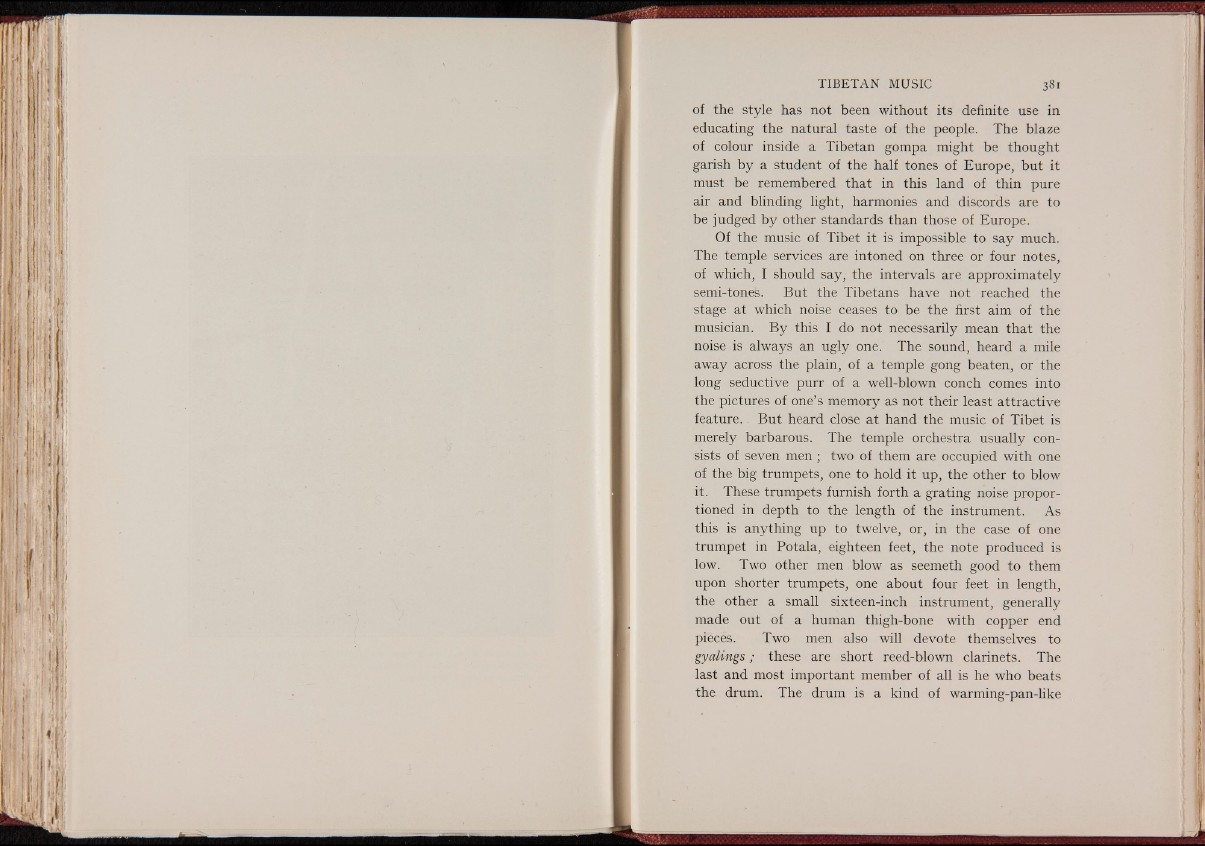
TIBETAN MUSIC 38i
of the style has not been without its definite use in
educating the natural taste of the people. The blaze
of colour inside a Tibetan gompa might be thought
garish by a student of the half tones of Europe, but it
must be remembered that in this land of thin pure
air and blinding light, harmonies and discords are to
be judged by other standards than those of Europe.
Of the music of Tibet it is impossible to say much.
The temple services are intoned on three or four notes,
of which, I should say, the intervals are approximately
semi-tones. But the Tibetans have not reached the
stage at which noise ceases to be the first aim of the
musician. By this I do not necessarily mean that the
noise is always an ugly one.' The sound, heard a mile
away across the plain, of a temple gong beaten, or the
long seductive purr of a well-blown conch comes into
the pictures of one’s memory as not their least attractive
feature. But heard close at hand the music of Tibet is
merely barbarous. The temple orchestra usually consists
of seven men ; two of them are occupied with one
of the big trumpets, one to hold it up, the other to blow
it. These trumpets furnish forth a grating noise proportioned
in depth to the length of the instrument. As
this is anything up to twelve, or, in the case of one
trumpet in Potala, eighteen feet, the note produced is
low. Two other men blow as seemeth good to them
upon shorter trumpets, one about four feet in length,
the other a small sixteen-inch instrument, generally
made out of a human thigh-bone with copper end
pièces. Two men also will devote themselves to
gyalings ; these are short reed-blown clarinets. The
last and most important member of all is he who beats
the drum. The drum is a kind of warming-pan-like